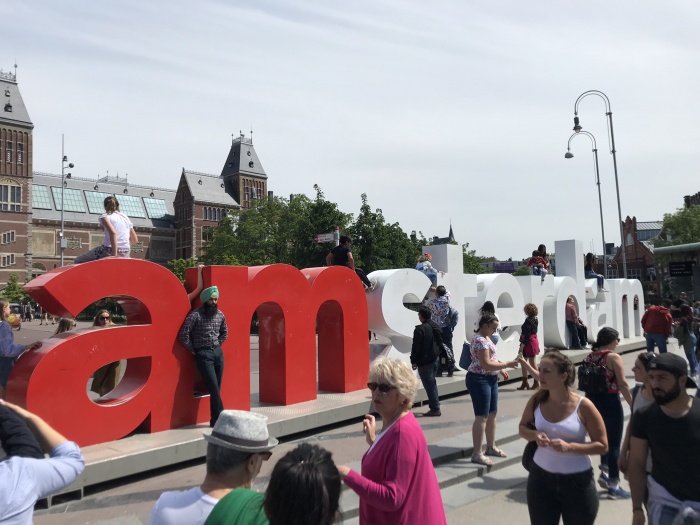
Breaking Travel News investigates: Amsterdam
A crowning achievement for outgoing chief executive Nicolas Petrovic, Eurostar launched services to Amsterdam earlier this year.
The new route whisks passengers to the Dutch capital in just under four hours and has been well received by travellers.
Eurostar offers passengers a fast check-in, with Business Premier guests required to arrive just ten minutes before departure, while the new e320 train glides directly into the Centraal Station in the heart of the city.
St Pancras is also a great deal easier to reach that Gatwick, Stansted, and even Heathrow.
In comparison to airlines, guests can also bring a great deal more luggage, for a significantly lower price, while there is no need to queue on arrival, as you simply carry it onto the train.
The new route also provides travellers an environmentally friendly alternative to the airlines.
With a high-speed rail journey from London to Amsterdam emitting 80 per cent less carbon per passenger than the equivalent flight, Eurostar’s new service reinforces its claim to be the most environmentally responsible choice for European short-haul travel.
On board, service is also of a different order to that offered by the low-cost carriers plying the route between London and the Dutch capital.
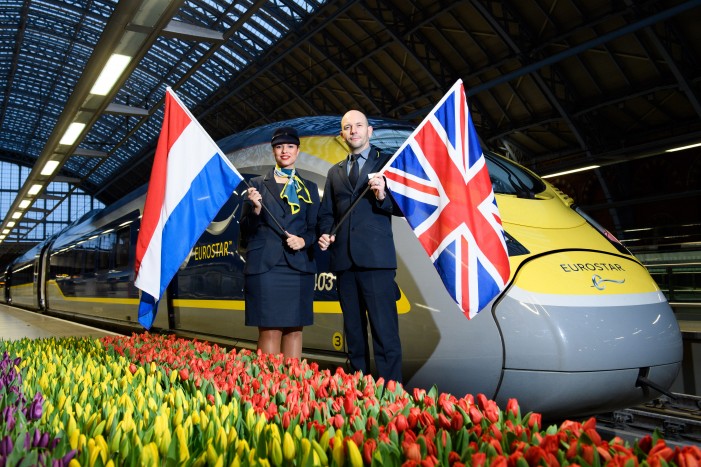
However, there are a few teething problems with the Amsterdam route as it stands.
Most seriously, the UK and the Netherlands have yet signed a deal on juxtaposed border controls, allowing British border officials to check passports of passengers at Amsterdam
This means, at least until 2019, all passengers leaving Amsterdam will take a Thalys high-speed train to Brussels.
Here, they disembark and clear passport control, before boarding a Eurostar service - perhaps even the very train which has run from empty Amsterdam to Brussels without them.
Visiting earlier this month, though, breaking the journey was not as onerous as feared, with the security procedures at Brussels Midi operating smoothly after years of practice.
Price is another consideration for passengers.
While Eurostar starts tickets to Amsterdam at £35, they escalate quickly, and can run into the hundreds of pounds as departure approaches.
London-Amsterdam is one of the more competitive aviation routes, so prices for low-cost carriers may well be cheaper.
Time-wise, however, there is little in it door-to-door, with the train cutting out a great deal of the faff associated with low-cost air travel.
There are currently only a dozen departures a week, at 08.31 and 17:51 on weekdays, and then the morning on Saturdays and evening on Sundays.
For leisure guests this is likely to be quite workable, but it might prove a touch restrictive for those travelling on business.
On my trip, leaving Amsterdam early on Sunday evening worked perfectly – giving me time to enjoy my stay in the Dutch capital before arriving back in London in good time.
As new Eurostar chief executive Mike Cooper explains: “With the Netherlands becoming increasingly popular as a business and tourism destination, the potential for our new route is significant and we look forward to offering our customers a fast, seamless connection between these key European cities.”
With its iconic canals and picturesque old town, its enviable collection of world-class art, an array of boutiques and restaurants, as well as an extensive calendar of concerts and festivals, Amsterdam itself is the perfect choice for a weekend getaway.
Nearly 18 million people visited the city last year, putting it in the top tier of global hospitality destinations.
Of course, many of these travellers came to indulge in the famously liberal nightlife, where soft drugs are tolerated and prostitution is legal.
So popular has the Dutch capital become, that the city has recently taken steps to cut the number of coffeeshops, limit the sprawl of the famous red-light district, and generally move the city upmarket.
There are now around 130 coffee shops, down by half over the past couple of years, while the sex trade remains focused on De Wallen, the medieval city centre.
The message does not seem to have got through to the throngs of visiting British, American and European guests, however, as the snap pics of the girls in red tinted boxes and seek out legal highs.

But, of course, there is much more to the city.
For example, why not take a (free) ferry out to the NDSM Wharf?
A collection of repurposed industrial buildings, these cavernous spaces now host a range of art galleries, performance spaces and exciting eateries.
On the other side of town, Brouwerij ‘t IJ, a microbrewery located inside an operational windmill, ensures Amsterdam is thoroughly on message for the millennial market.
There are also ample opportunities to purchase tulips, cheese, and fine wine, as well as visiting the innumerable world-class museums, with more information listed on the official tourism website.
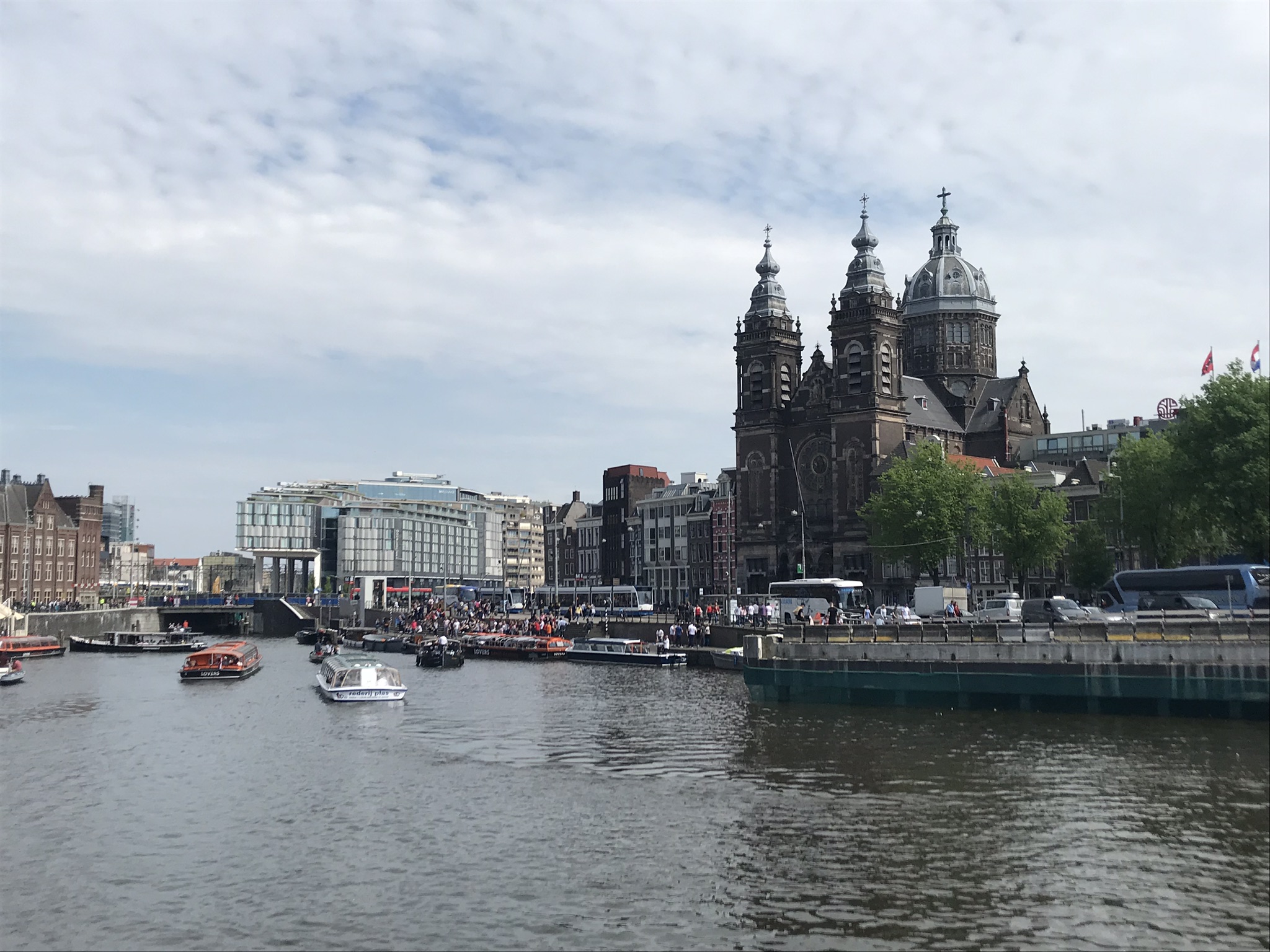
Catering to this young, savvy market, Kimpton de Witt is one of the more exciting properties to open in Amsterdam of late.
Managed by InterContinental Hotel Group, the brand is currently in line for a major expansion in Europe, with the Dutch property acting as something of a vanguard.
On offer is a marriage of the old and the new, with a late 20th century building (featuring architecture from the Dutch Golden Age) now housing a property of modern elegance.
Design is the key here.
Inspired by Dutch heritage with Kimpton’s signature wit, its spirited edge is immediately evident from the striking ‘living wall’ of vibrant florals and botanicals trailing the entrance.
“And breathe…” advises a neon sign on arrival, wisely.
Welcome drinks hosted in the lobby have the feel of an art gallery private view, as the young and the beautiful network before heading out for the evening.
The hotel’s 274 rooms, which include nine signature suites in the original Golden Age buildings, are inspired by Dutch design, from a modern take on classic Dutch art in the bedrooms to the blue Delft-inspired tiles paving the bathroom floors.
Crystal glasses, brass flourishes, and neo-carriage clocks all add flair, while décor wouldn’t look out of place in a Brooklyn loft.
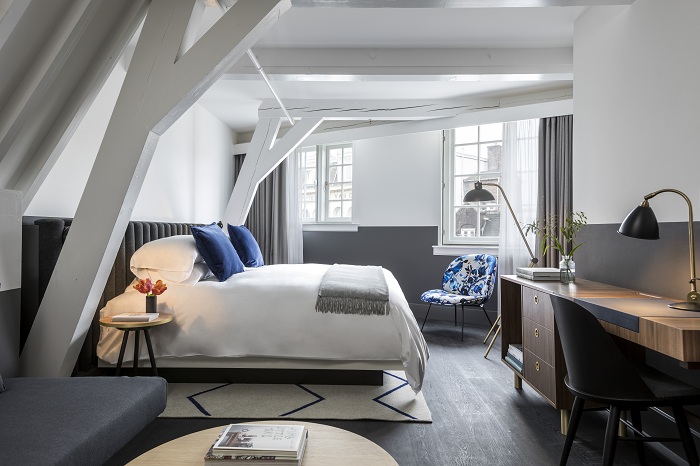
“Europe was the original inspiration behind Bill Kimpton founding the brand and now we’re bringing the brand home again.
“Opening in Amsterdam, gives us the perfect opportunity to indulge in the playful, creative and innovative approach to luxury that the city inspires in Kimpton’s unique and special way,” commented an IHG spokesman.
“Amsterdam as a city is effortless in design, highly diverse and a hotbed of creativity, making it the perfect match for our first Kimpton hotel in Europe.
“We’ll be bringing Kimpton to Paris next and have big plans for other cities across the continent.”
Kimpton is famous for its award-winning restaurants and bars and Kimpton De Witt is no exception.
Next to the hotel, Wyers Bar & Restaurant, offers American staples with Dutch influences, whilst House Bar provides guests and locals with a luxurious resting post where bartenders craft creative cocktails using unexpected ingredients as well as serve an extensive menu of local gins.
Local passers-by can grab a hot cup of strong coffee, made with coffee beans roasted locally especially for the café and fresh sugar-dusted beignets, at Miss Louisa Coffee & Beignets.
Kimpton de Witt is a property designed for the next generation of travellers, those who demand more than the freshman idea of Amsterdam and are seeking a sophisticated place to stay.
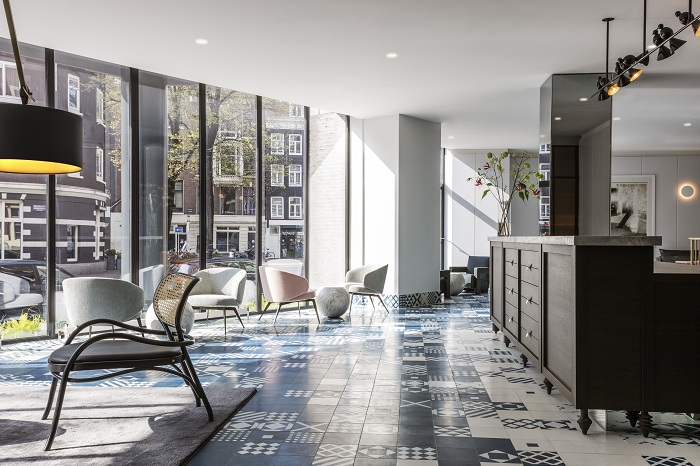
More Information
Acquired by InterContinental Hotels Group in January 2015, the acclaimed US hotel group was founded by Bill Kimpton following inspiration from his European travels as an investment banker.
There are now over 60 Kimpton hotels and more than 70 restaurants in 30 US cities, with an opening in Paris slated for 2020.
Find out more on the official website.


